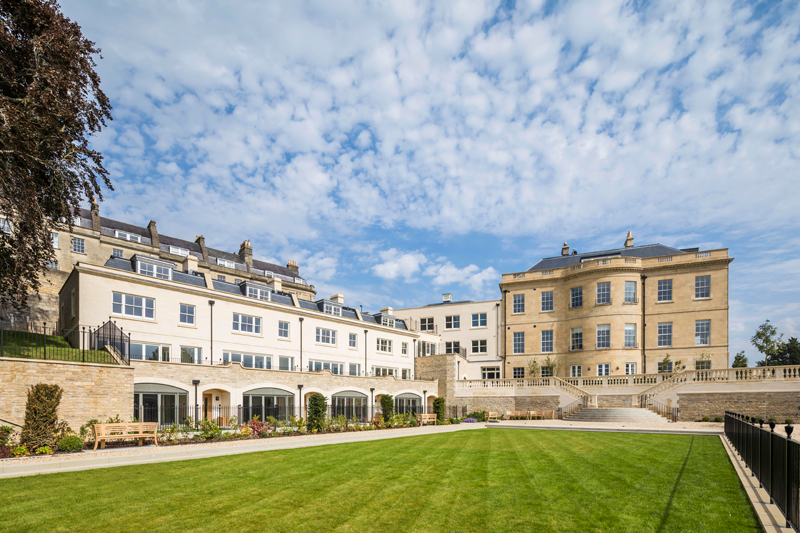Life in lockdown has brought a renewed focus on exercise and healthy living – with an increased desire among many buyers to move somewhere that has plenty of green space. In August Savills conducted a survey of 1,400 registered buyers and sellers in which 62% responded to say that the amount of garden or the size of an outside area had become more important in their search for a new property (up from 49% in April).
Vicky Dudbridge and Anna Fairman, head of residential development sales for Savills Bristol and Bath respectively, believe that the challenge for developers moving forward is how their new schemes can meet people’s changing priorities.
Bristol and nearby Bath are fortunate to have a great variety of new properties – many of which have their own gardens and are complemented by surrounding countryside. And for those developments in more built up areas, communal gardens work alongside balconies to provide greater daylight and corners of privacy for residents.
In Bristol, The Vincent for example enjoys expansive green space at nearby Durdham Down and the Victorian-inspired arboretum garden offers spacious communal grounds including a south-facing terrace. While the enclosed communal gardens at Factory No. 1 in Bedminster offer a space where grassed areas, trees and generous planting create an oasis of calm within the city environment.
Meanwhile, in Bath Holburne Park enjoys a parkland setting and extensive walking paths situated next to the Kennet and Avon Canal. Close to the city centre, Hope House combines elegant lawns with informal parklands and optimises the sites elevation just as gardening enthusiast Chares Hamilton did when he leased Hope House in the late 18th Century.

Given recent experiences it’s likely that we will see an increasing proportion of developments with meaningful outside space coming to the market. Developers will have to find inventive ways to incorporate more greenery into their designs, from multi-acre parks and private terraces to river side walkways and cycle paths.
Green roofs are another route for developers seeking to deliver outdoor space, not only for residents’ wellbeing, but also to enhance biodiversity, often improving the thermal performance of a building and providing a great aesthetic.
Recently confirmed flexibility in planning policy should also allow town centre uses to change more easily, potentially creating a greater number of mixed-use workplaces.
Where possible, the premise of the 15-minute town (or five-minute village) – where all your daily necessities, such as work, shopping, entertainment, schools and recreation are within a 15-minute walk or cycle from your home – will no doubt be used by planning officials to assess how the places in which we live can be made more sustainable and accessible by bicycle and on foot.
Regeneration schemes in particular – such as Redland Court in Bristol where the communal grounds are designed to complement and enhance the existing flora found within the gardens – provide a valuable opportunity to build meaningful outside areas into the core of a development offering.
Recent experiences mean that access to green spaces are likely to be a focus for buyers – and therefore developers – long after lockdown is over. Rather than fulfilling a planning requirement tick-box exercise, they should be integral to the design from the outset.
For more information about new homes in Bristol and Bath please contact Vicky Dudbridge or Anna Fairman on 0117 910 0360.
Main image: The Vincent – an exclusive development of 1, 2 and 3 bedroom apartments for the over 60s in Redland.
The post A greener future for new developments? appeared first on The Bath Magazine.